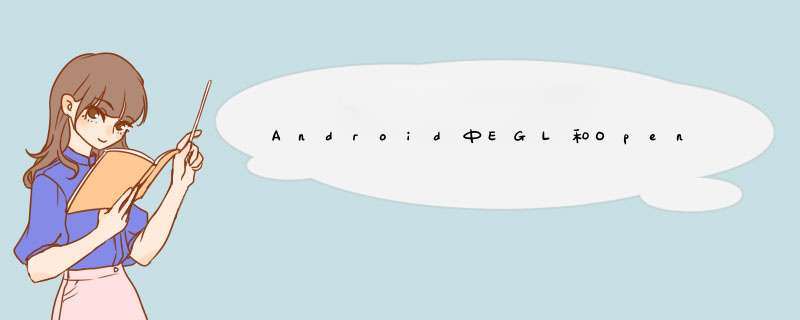
2、 打开FillTriangleActivity.Java,将其内容改为:
[java] view plain copy
package com.filltriangle.android
import android.app.Activity
import android.os.Bundle
import android.util.Log
import android.view.WindowManager
import java.io.File
public class FillTriangleActivity extends Activity {
GL2JNIView mView
@Override protected void onCreate(Bundle icicle) {
super.onCreate(icicle)
mView = new GL2JNIView(getApplication())
setContentView(mView)
}
@Override protected void onPause() {
在PC上,需要得到两个版本的Qt,分别是:Qt-4.5.2和QtEmbedded-4.5.2-arm。前者包括了QtDesigner等基本工具,用于在PC上对程序的开发调试,使能确保程序放到板子上之前就符合设计的要求;然后用后者的库将调试好的程序编译成能在arm-linux平台上运行的程序。
Qt-4.5.2用从网上下载到的qt-x11-opensource-src-4.5.2.tar.gz编译后安装得到;QtEmbedded-4.5.2-arm用qt-embedded-linux-opensource-src-4.5.2.tar.gz编译后安装得到,Qt-embedded-linux-opensource-src-4.5.2.tar.gz还可以编译成Qt Embedded-4.5.2-X86,但不需要。在编译qt-embedded-linux-opensource-src-4.5.2.tar.gz之前,必须准备好arm-linux-gcc交叉编译工具,用的是arm-linux-gcc-3.4.1。
所以先要准备好的软件包有:
Pc的 *** 作系统是:LINUX-ubuntu8.04。
下面是具体编译安装过程:
1、Qt-4.5.2的获得将qt-x11-opensource-src-4.5.2.tar.gz复制到目录:/home/chh/Project/qt,
2、然后解压:
#tar zxvf qt-x11-opensource-src-4.5.2.tar.gz
得到一个新目录:qt-x11-opensource-src-4.5.2
cd进入这个目录,准备开始编译。
3、在终端中这样 *** 作:
#./configure –qvfb //编译配置,此过程大概历时几分钟; #make //正式编译,过程漫长,大概2个多小时; #cd tools/qvfb //进入此目录,准备对它进行编译 #make //编译,几分钟 #cd ../.. //回到qt-x11-opensource-src-4.5.2主目录,准备安装 #make install //安装,十几分钟吧;
4、此步必须以root身份完成,否则无法建立目录
5、可以在/usr/local/下看到一个Trolltech目录,进入该目录发现Qt-4.5.2目录已经出现,进入里面的bin目录,Designer等工具已经可以使用了。
6、编译过程相当费时,所以可以直接拷贝已经编译过的源码,直接make install。
7、至此,Qt-4.5.2的安装已经顺利完成。
QtEmbedded-4.5.2-arm的获得
在编译安装qt-embedded-linux-opensource-src-4.5.2之前,必须先配置好arm-linux-gcc,将arm-linux-gcc-3.4.1.tar.bz2解压到目录:/usr/local下,此时local下出现一个名为arm的目录,然后配置好环境变量:在/etc/profile添加一句:export PATH=$PATH:/usr/local/arm/3.4.1/bin,保存后#source /etc/profile一下,让它即时生效。 否则下面的编译过程会提示找不到arm-linux-gcc命令。 现在可以开始编译了:
将qt-embedded-linux-opensource-src-4.5.2.tar.gz复制到目录:/home/chh/Project/qt, 然后解压:#tar zxvf qt-embedded-linux-opensource-src.tar.gz, 得到新目录qt-embedded-linux-opensource-src-4.5.2。
进入qt-embedded-linux-opensource-src-4.5.2目录,首先进行configure。 这里的参数很重要,必不可少的是-embedded arm,所以最简单的配置信息可以这样:
./configure \ -embedded arm
然后回车,就开始configure了,参数设置和参考文章一样,裁减了很多,减少了编译时间:
./configure \ -release \ -shared \ -fast \ -no-largefile \ -qt-sql-sqlite \ -no-qt3support \ -no-xmlpatterns \ -no-mmx \ -no-3dnow \ -no-sse \ -no-sse2 \ -no-svg \ -no-webkit \ -qt-zlib \ -qt-gif \ -qt-libtiff \ -qt-libpng \ -qt-libmng \ -qt-libjpeg \ -make libs \ -xplatform qws/linux-arm-g++ \ -nomake tools \ -nomake examples \ -nomake docs \ -nomake demo \ -no-nis \ -no-cups \ -no-iconv \ -no-dbus \ -no-openssl \ -embedded arm \ -little-endian \ -qt-freetype \ -depths 16,18 \ -qt-gfx-linuxfb \ -no-gfx-transformed \ -no-gfx-multiscreen \ -no-gfx-vnc \ -no-gfx-qvfb \ -qt-kbd-usb \ -no-glib
之后就可以编译了,#make,漫长等待后再 #make install。Make install还是需要root权限。
完成后,在/usr/local/Trolltech下多了一个目录:Qt Embedded-4.5.2-arm。
准备为了开始本次的教程,你必须具备:
1.一款支持Android开发的IDE,如果你没有的话,可以在Android Developer website下载最新版本的Android studio。
2.一款运行Android4.0之上Android手机,并且GPU支持OpenGL ES2.0
3.对OpenGL的基本知识了解
设置OpenGL ES环境
创建GLSurfaceView
为了显示OpenGL的图形,你需要使用GLSurfaceView类,就像其他任何的View子类意义,你可以将它添加到你的Activity或Fragment之上,通过在布局xml文件中定义或者在代码中创建实例。
在本次的教程中,我们使用GLSurfaceView作为唯一的View在我们的Activity中,因此,为了简便,我们在代码中创建
GLSurfaceView的实例并将其传入setContentView中,这样它将会填充你的整个手机屏幕。Activity中的onCreate方
法如下:
protected void onCreate(Bundle savedInstanceState) {
super.onCreate(savedInstanceState)
GLSurfaceView view = new GLSurfaceView(this)
setContentView(view)
}123456123456
因为媒体效果的框架仅仅支持OpenGL ES2.0及以上的版本,所以在setEGLContextClientVersion 方法中传入2;
view.setEGLContextClientVersion(2)11
为了确保GLSurfaceView仅仅在必要的时候进行渲染,我们在setRenderMode 方法中进行设置:
view.setRenderMode(GLSurfaceView.RENDERMODE_WHEN_DIRTY)11
创建Renderer
Renderer负责渲染GLSurfaceView中的内容。
创建类实现接口GLSurfaceView.Renderer,在这里我们打算将这个类命名为EffectsRenderer,添加构造函数并覆写接口中的抽象方法,如下:
public class EffectsRenderer implements GLSurfaceView.Renderer {
public EffectsRenderer(Context context){
super()
}
@Override
public void onSurfaceCreated(GL10 gl, EGLConfig config) {
}
@Override
public void onSurfaceChanged(GL10 gl, int width, int height) {
}
@Override
public void onDrawFrame(GL10 gl) {
}
}123456789101112131415161718123456789101112131415161718
回到Activity中调用setRenderer方法,让GLSurfaceView使用我们创建的Renderer:
view.setRenderer(new EffectsRenderer(this))11
编写Manifest文件
如果你想要发布你的App到谷歌商店,在AndroidManifest.xml文件中添加如下语句:
<uses-feature android:glEsVersion="0x00020000" android:required="true" />11
这会确保你的app只能被安装在支持OpenGL ES2.0的设备之上。现在OpenGL环境准备完毕。
创建一个OpenGL平面
定义顶点
GLSurfaceView是不能直接显示一张照片的,照片首先应该被转化为纹理,应用在OpenGL square之上。在本次教程中,我将创建一个2D平面,并且具有4个顶点。为了简单,我将使用一个长方形,现在,创建一个新的类Square,用它来代表形状。
public class Square {
}123123
默认的OpenGL系统的坐标系中的原点是在中心,因此4个角的坐标可以表示为:
左下角: (-1, -1)
右下角:(1, -1)
右上角:(1, 1)
左上角:(-1, 1)
我们使用OpenGL绘制的所有的物体都应该是由三角形决定的,为了画一个方形,我们需要两个具有一条公共边的三角形,那意味着这些三角形的坐标应该是:
triangle 1: (-1, -1), (1, -1), 和 (-1, 1)
triangle 2: (1, -1), (-1, 1), 和 (1, 1)
创建一个float数组来代表这些顶点:
private float vertices[] = {
-1f, -1f,
1f, -1f,
-1f, 1f,
1f, 1f,
}123456123456
为了在square上定位纹理,需要确定纹理的顶点坐标,创建另一个数组来表示纹理顶点的坐标:
private float textureVertices[] = {
0f,1f,
1f,1f,
0f,0f,
1f,0f
}123456123456
创建缓冲区
这些坐标数组应该被转变为缓冲字符(byte buffer)在OpenGL可以使用之前,接下来进行定义:
private FloatBuffer verticesBuffer
private FloatBuffer textureBuffer1212
在initializeBuffers方法中去初始化这些缓冲区:使用ByteBuffer.allocateDirect来创建缓冲区,因为float是4个字节,那么我们需要的byte数组的长度应该为float的4倍。
下面使用ByteBuffer.nativeOrder方法来定义在底层的本地平台上的byte的顺序。使用asFloatBuffer方法将
ByteBuffer转化为FloatBuffer,在FloatBuffer被创建后,我们调用put方法来将float数组放入缓冲区,最后,调用
position方法来保证我们是由缓冲区的开头进行读取。
private void initializeBuffers(){
ByteBuffer buff = ByteBuffer.allocateDirect(vertices.length * 4)
buff.order(ByteOrder.nativeOrder())
verticesBuffer = buff.asFloatBuffer()
verticesBuffer.put(vertices)
verticesBuffer.position(0)
buff = ByteBuffer.allocateDirect(textureVertices.length * 4)
buff.order(ByteOrder.nativeOrder())
textureBuffer = buff.asFloatBuffer()
textureBuffer.put(textureVertices)
textureBuffer.position(0)
}1234567891011121312345678910111213
创建着色器
着色器只不过是简单的运行在GPU中的每个单独的顶点的C程序,在本次教程中,我们使用两种着色器:顶点着色器和片段着色器。
顶点着色器的代码:
attribute vec4 aPosition
attribute vec2 aTexPosition
varying vec2 vTexPosition
void main() {
gl_Position = aPosition
vTexPosition = aTexPosition
}12345671234567
片段着色器的代码
precision mediump float
uniform sampler2D uTexture
varying vec2 vTexPosition
void main() {
gl_FragColor = texture2D(uTexture, vTexPosition)
}123456123456
如果你了解OpenGL,那么这段代码对你来说是熟悉的,如果你不能理解这段代码,你可以参考OpenGL documentation。这里有一个简明扼要的解释:
顶点着色器负责绘制单个顶点。aPosition是一个变量被绑定到FloatBuffer上,包含着这些顶点的坐标。相似
的,aTexPosition 是一个变量被绑定到FloatBuffer上,包含着纹理的坐标。gl_Position
是一个在OpenGL中创建的变量,代表每一个顶点的位置,vTexPosition是一个数组变量,它的值被传递到片段着色器中。
在本教程中,片段着色器负责square的着色。它使用texture2D方法从纹理中拾取颜色,并且使用一个在OpenGL中被创建的变量gl_FragColor将颜色分配到片段。
在该类中,着色器的代码应该被转化为String。
private final String vertexShaderCode =
"attribute vec4 aPosition" +
"attribute vec2 aTexPosition" +
"varying vec2 vTexPosition" +
"void main() {" +
" gl_Position = aPosition" +
" vTexPosition = aTexPosition" +
"}"
private final String fragmentShaderCode =
"precision mediump float" +
"uniform sampler2D uTexture" +
"varying vec2 vTexPosition" +
"void main() {" +
" gl_FragColor = texture2D(uTexture, vTexPosition)" +
"}"1234567891011121314151612345678910111213141516
创建程序
创建新的方法initializeProgram来创建一个编译和链接着色器的OpenGL程序。
使用glCreateShader创建一个着色器对象,并且返回以int为表示形式的指针。为了创建顶点着色器,传递
GL_VERTEX_SHADER给它。相似的,为了创建一个片段着色器,传递GL_FRAGMENT_SHADER给它。下面使用
glShaderSource方法关联相对应的着色器代码到着色器上。使用glCompileShader编译着色器代码。
在编译了着色器的代码后,创建一段新的的程序glCreateProgram,与glCreateShader相似,它也返回一个以int为表示形式的指针。调用glAttachShader方法附着着色器到程序中,最后,调用glLinkProgram进行链接。
代码:
private int vertexShader
private int fragmentShader
private int program
private void initializeProgram(){
vertexShader = GLES20.glCreateShader(GLES20.GL_VERTEX_SHADER)
GLES20.glShaderSource(vertexShader, vertexShaderCode)
GLES20.glCompileShader(vertexShader)
fragmentShader = GLES20.glCreateShader(GLES20.GL_FRAGMENT_SHADER)
GLES20.glShaderSource(fragmentShader, fragmentShaderCode)
GLES20.glCompileShader(fragmentShader)
program = GLES20.glCreateProgram()
GLES20.glAttachShader(program, vertexShader)
GLES20.glAttachShader(program, fragmentShader)
GLES20.glLinkProgram(program)
}1234567891011121314151617181912345678910111213141516171819
你可能会发现,OpenGL的方法(以gl开头的)都是在GLES20类中,这是因为我们使用的是OpenGL ES2.0,如果我们使用更高的版本,就会用到这些类:GLES30,GLES31。
画出形状
现在定义draw方法来利用我们之前定义的点和着色器进行绘制。
下面是你需要做的:
1.使用glBindFramebuffer方法创建一个帧缓冲对象(FBO)
2.调用glUseProgram创建程序,就像之前所提
3.传递GL_BLEND给glDisable方法,在渲染过程中禁用颜色的混合。
4.调用glGetAttribLocation得到变量aPosition和aTexPosition的句柄
5.使用glVertexAttribPointer连接aPosition和aTexPosition的句柄到各自的verticesBuffer和textureBuffer
6.使用glBindTexture方法绑定纹理(作为draw方法的参数传入)到片段着色器上
7.调用glClear方法清空GLSurfaceView的内容
8.最后,使用glDrawArrays方法画出两个三角形(也就是方形)
代码:
public void draw(int texture){
GLES20.glBindFramebuffer(GLES20.GL_FRAMEBUFFER, 0)
GLES20.glUseProgram(program)
GLES20.glDisable(GLES20.GL_BLEND)
int positionHandle = GLES20.glGetAttribLocation(program, "aPosition")
int textureHandle = GLES20.glGetUniformLocation(program, "uTexture")
int texturePositionHandle = GLES20.glGetAttribLocation(program, "aTexPosition")
GLES20.glVertexAttribPointer(texturePositionHandle, 2, GLES20.GL_FLOAT, false, 0, textureBuffer)
GLES20.glEnableVertexAttribArray(texturePositionHandle)
GLES20.glActiveTexture(GLES20.GL_TEXTURE0)
GLES20.glBindTexture(GLES20.GL_TEXTURE_2D, texture)
GLES20.glUniform1i(textureHandle, 0)
GLES20.glVertexAttribPointer(positionHandle, 2, GLES20.GL_FLOAT, false, 0, verticesBuffer)
GLES20.glEnableVertexAttribArray(positionHandle)
GLES20.glClear(GLES20.GL_COLOR_BUFFER_BIT)
GLES20.glDrawArrays(GLES20.GL_TRIANGLE_STRIP, 0, 4)
}1234567891011121314151617181920212212345678910111213141516171819202122
在构造函数中添加初始化方法:
public Square(){
initializeBuffers()
initializeProgram()
}12341234
渲染OpenGL平面和纹理
现在我们的渲染器什么也没做,我们需要改变它来渲染我们在前面创造的平面。
首先,让我们创建一个Bitmap,添加一张照片到res/drawable文件夹之下,我把它命名为forest.jpg,使用BitmapFactory将照片转化为Bitmap。另外将照片的尺寸存储下来。
改变EffectsRenderer的构造函数如下,
private Bitmap photo
private int photoWidth, photoHeight
public EffectsRenderer(Context context){
super()
photo = BitmapFactory.decodeResource(context.getResources(), R.drawable.forest)
photoWidth = photo.getWidth()
photoHeight = photo.getHeight()
}1234567812345678
欢迎分享,转载请注明来源:内存溢出

 微信扫一扫
微信扫一扫
 支付宝扫一扫
支付宝扫一扫
评论列表(0条)